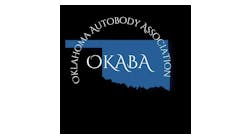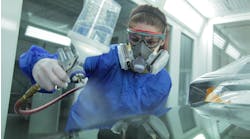As a collision center manager, Ronnie Brush essentially has one key tenet: take care of customers, and ensure they come back to you.
No matter what a customer requests at Westside Lexus in Houston, the veteran manager attempts to deliver. Brush takes on every heavy-hit repair that’s thrown his way. But the body shop manager also knows that he can add to tickets while vehicles are in the shop, provided he and his employees simply listen to their customers.
That’s why, for the last 15 years especially, the staff at Westside has made sure to address issues like one-panel scrapes or small dents, whenever customers express such a concern with their vehicles. By simply listening, the Houston collision center often ends up landing customer-pay jobs worth $1,500.
“You need those small jobs,” says Brush, a veteran of 34 years in the industry.
Brush has learned that taking care of each and every customer concern can pay off; Westside has seen its annual revenue increase steadily for years—reaching nearly $12 million last year.
The Problem
Westside has many of the amenities you’d expect from a high-end dealership, like a waiting area with classy furnishings. What the dealership doesn’t have, however, is a ton of parking. That’s particularly true for Brush’s body shop, tucked away in the back of the dealership.
“We’re very land locked, so I don’t have a ton of space to park cars,” Brush explains.
“So, the faster I can get them out, the sooner I can get another car in.”
Brush, who has been at the Houston dealership for nearly a quarter century, eventually figured out he needed to minimize the length of time cars spent at his collision repair center.
The Solution
The body shop at Westside has long taken on small-ticket jobs, like paintless dent repair or bumper work. But, considering the facility’s parking concerns, Brush knew he couldn’t afford to have vehicles lingering any longer than necessary.
Finally, roughly 15 years ago, he came up with a solution: He would hire a C-level technician who would focus exclusively on bumpers.
Before long, Westside was pre-ordering and pre-painting 5–10 bumpers per week. Customers were willing to schedule the repairs, were paying around $1,000 for the small-ticket work, and the jobs were usually done in one day (usually, quick enough that a rental car wasn’t required). And, Brush no longer had to pay an A-tech a large rate to handle such tasks.
Years later, that decision is still paying dividends. And Brush’s service advisors just seem to get better and better at selling the small, customer-pay jobs. The advisors make it a point to identify customers’ budgets, and then typically present them with more than one option for small-ticket items. And, they educate clients on how issues like color matching are addressed, with thorough explanations.
“The key to all of it is getting all your advisors with the same shtick and with the same mindset, and the same way they sell jobs,” Brush explains. “I talk to my advisors and say, ‘Talk to the customer—find out what they’re trying to accomplish.’ Ask ‘What kind of money are you looking to spend?’
“Sometimes we can negotiate the deal if we communicate better with the customers, and know exactly what their desired end result is.
“The key to capturing small work is communication with the customer.”
The Takeaway
Brush’s crew in Houston has become quite efficient at small-ticket work, particularly with regard to bumpers. The collision center has become an assembly line of sorts, with bumper work often requiring a short one-hour stop-in by clients.
And that’s the key to making small-ticket jobs truly beneficial for a shop: working efficiently.
“You need those small jobs to kind of keep the guys rolling,” Brush says. “You’ve got to have the gap fillers. … What we’re trying to do is maximize the volume of work that we can.”
Since designating one full-time technician to bumper work, Brush has seen his facility’s annual revenue increase from $6.2 million in 2002, to $8.3 million by 2008, to its current level of nearly $12 million. Now, in late 2017, there’s legitimate talk of moving Westside’s body shop to a newer, larger location in the near future.
Clearly, small jobs like bumper work have made a big impact at Westside. They have also won over customers.
“We tell them, ‘Look, we’ll go ahead and pre-order the bumper, pre-paint it, pre-buff it. All you’ve got to do is come in and wait 45 minutes,’” says Brush. “They don’t even get done with their coffee and we bring the car up. And they say, ‘This is amazing.’”




